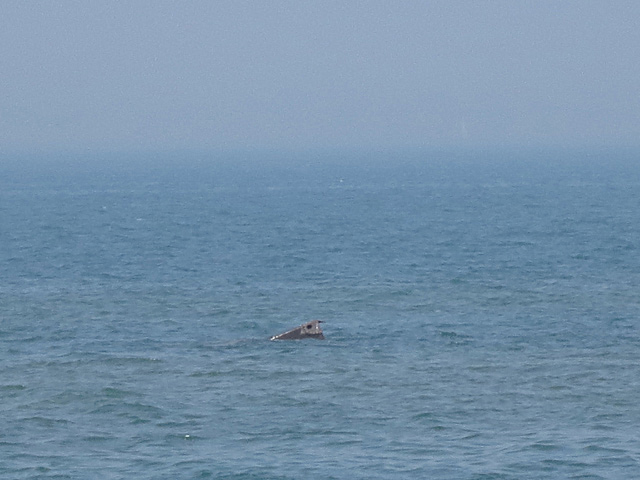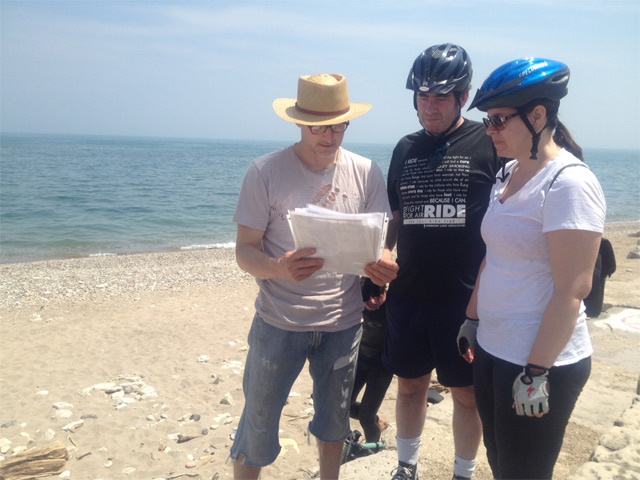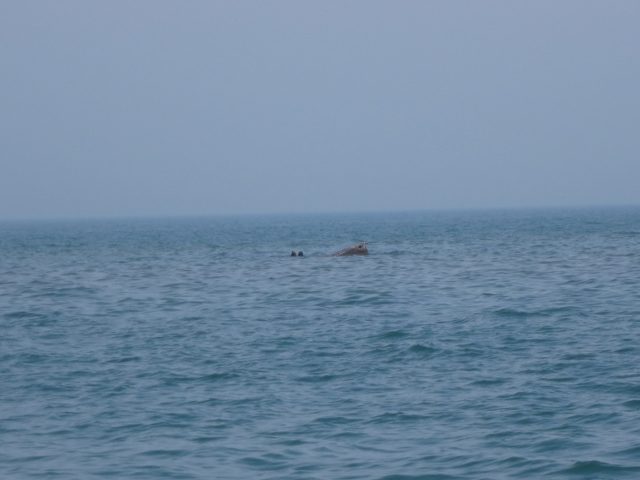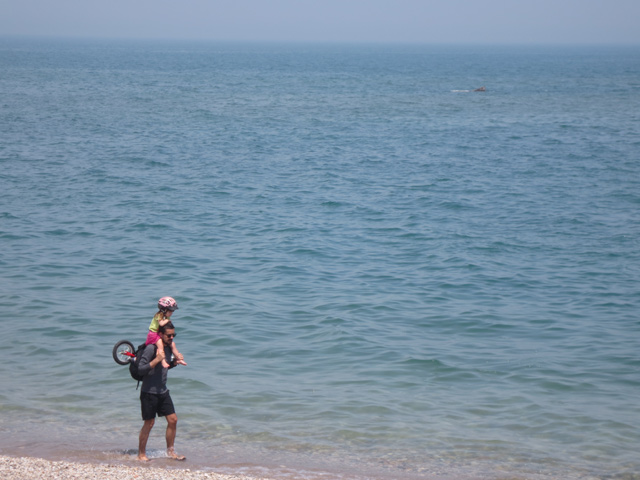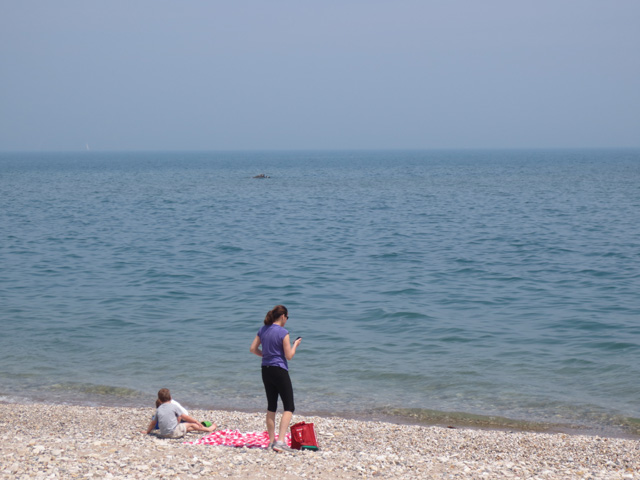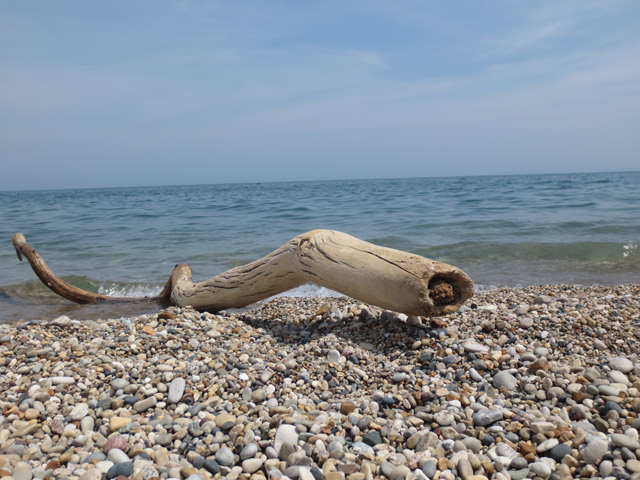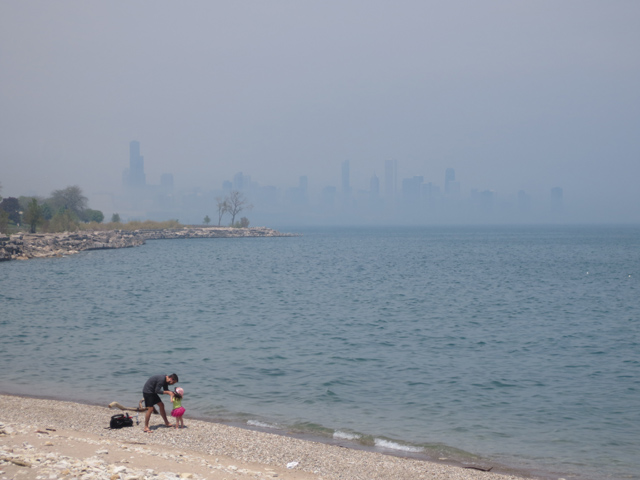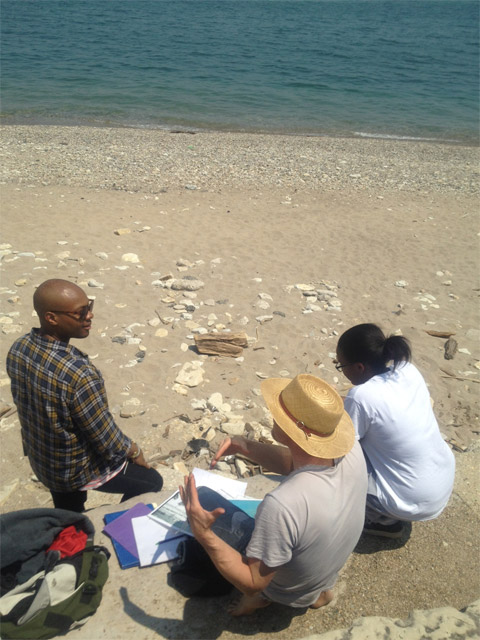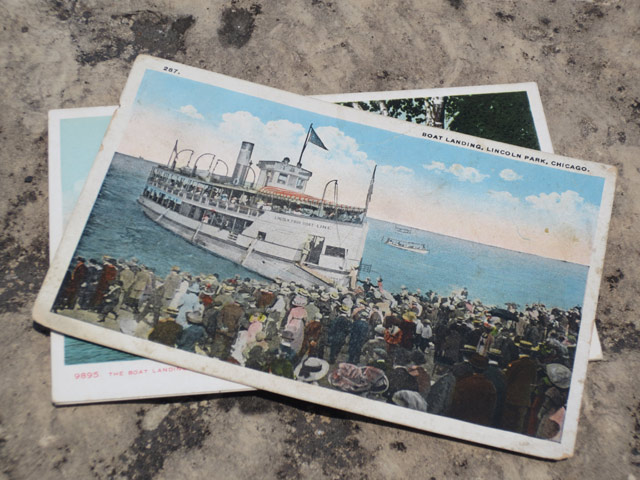Chicago Shipwreck Hiding In Plain Sight
By JoshMogerman in News on May 20, 2013 3:00PM
Every day Chicagoans walk and bike along the Lake near Hyde Park and Bronzeville, unwittingly passing a readily visible shipwreck and the unique geological formation which claimed the boat a century ago (and a steady stream of outboard propellers since).
Morgan Shoal is a million square foot dolomite shelf left over from glacial action millions of years ago near what would eventually be Lake Shore Drive at 49th Street. The wave action at this unique spot along the shoreline creates the city’s only pebble beach and a tricky navigational spot for boats, evidenced by remnants of the Silver Spray, which have poked above the water just a few hundred yards out for nearly a century. In July of 1914, the 109-foot passenger boat was set to pick up U of C students for a trip to see the steel mills in Northwest Indiana when it strayed too close to the rocky shoal and eventually broke up in full view of a raucous crowd of Hyde Parkers who burned wood washing up on shore from the wreck in bonfires while watching the spectacle.
Both the remnants of that disaster and the underwater fishy wonder world created by the shallow waters of the shoal have enraptured Greg Lane, who spends a chunk of his Sundays educating the public about the shoal. The water was too cold for us to join Lane for a swim out to the Silver Spray wreckage when we caught up with him on Sunday morning, but snorkelers from the Underwater Archaeological Society of Chicago could be seen bobbing in the water around the remains of the boat’s firebox a few hundred yards offshore. The rusty firebox, which looks a lot like a rock outcropping from the beach, sticks out of the water in full view from shore. But it is only a small fraction of the wreckage that remains. Underwater, swimmers can get a good look at the ship's boiler, engine core, drive wheel, struts, and a 40-foot long drive shaft with impressive propellers. History’s lessons do not always stick and despite the clear warning offered by the Silver Spray, dozens of boats have run aground on Morgan Shoal in recent years (Lane pointed to a damaged motor on the beach, assumedly the most recent victim of the shallow rocks offshore).
Lane was hooked the first time he saw the Silver Spray’s remains and the very different aquatic environment of the Morgan shoal which he describes as “amazing, beautiful, almost tropical” due to the lush aquatic life along its shallows. His hand-lettered “shipwreck tour” sign on the lakeshore trail lures a steady stream of interested onlookers and swimmers his way on Sundays for a jaunty chat, where he also displays an activist streak. One of the vestiges of Chicago’s ill-fated Olympic bid is a plan to pave over Morgan Shoal to create additional parkland, so Lane does not miss an opportunity to evangelize for preservation and celebration of the spot. Noting that only Illinois lacks underwater parks along Lake Michigan’s shoreline (Wisconsin, Michigan and Indiana have them), Lane would like to see a marine sanctuary extending a half-mile out from shore. While there is no doubt that the South Side needs more quality parks, Lane’s vision to celebrate a spot where nautical and geologic history come alive is pretty engaging and connects nicely with other park plans underway throughout Chicagoland. We will be returning for a swim to the wreck, but in the meantime, Lane and “Chicago Tonight” have posted great video that will have to suffice until the water warms up.
